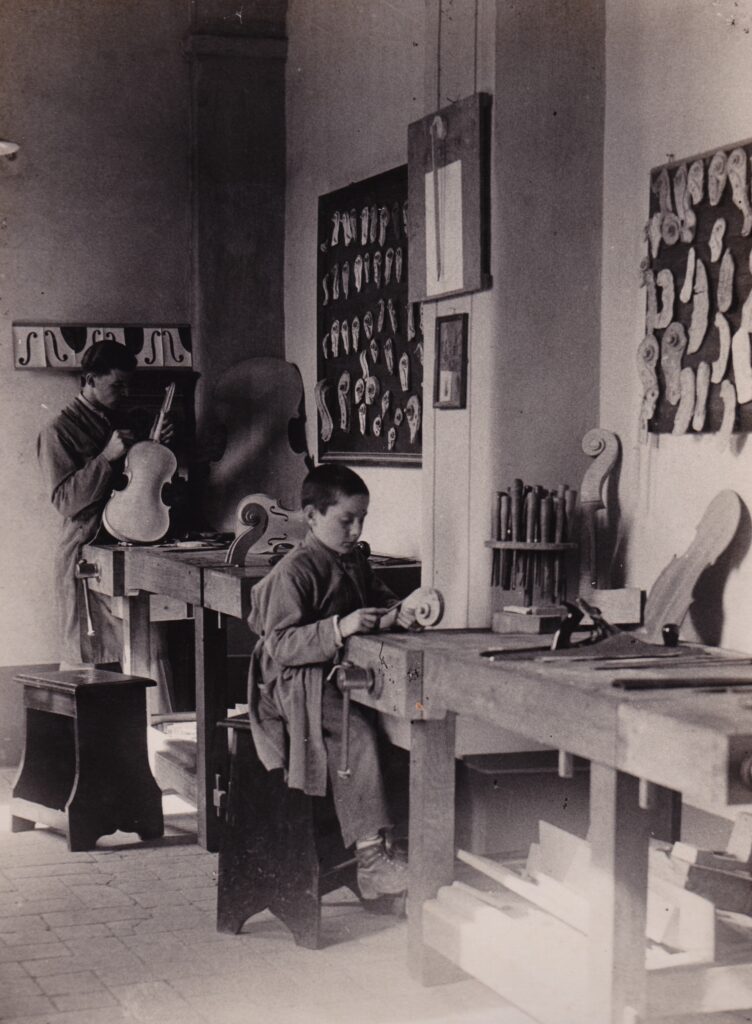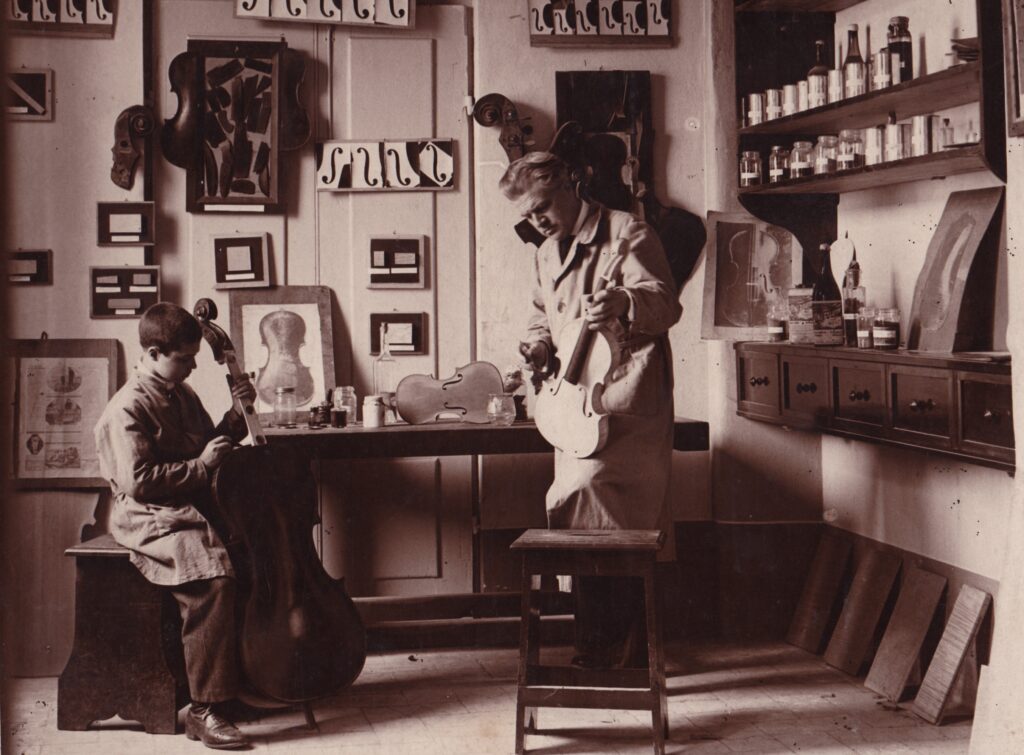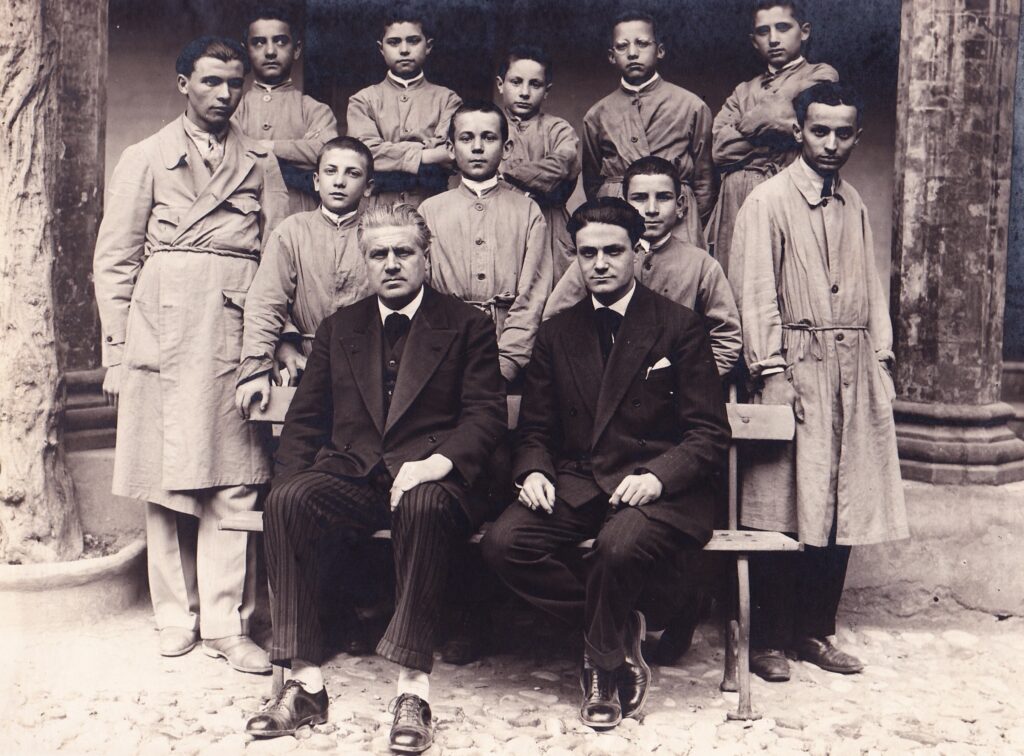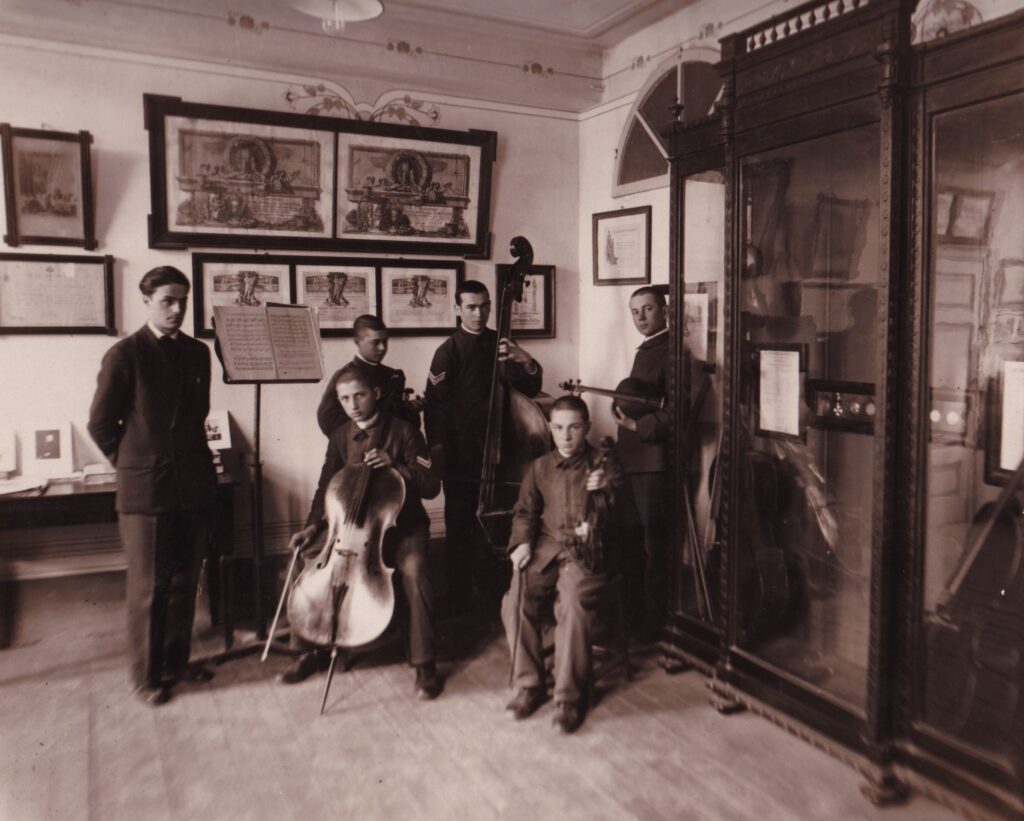FOUNDERS

Renato Scrollavezza
Renato Scrollavezza was born in Castelnuovo Fogliani, in the province of Piacenza, on April 14, 1927.
His parents, laborers, moved in 1930 to Noceto, where Renato attended elementary school and began working the land. From childhood he shows a marked inclination for drawing, which is not encouraged, however, being rather opposed in the environment in which he grows up. Even stronger in him, however, is his passion for music, which is expressed mainly through his desire to play the violin, an instrument that had struck his sensibilities during a public performance in the town square.
When he was only fifteen years old, having had the opportunity to examine a mandolin, Scrollavezza decided to build his own. A project that he carried out, self-taught, within a few months.
However, it is always the violin (or rather the intense memory of that day in the square and those poignant sounds) that occupies the boy’s dreams. And when a friend finally manages to buy the longed-for instrument, Renato, who is 17 years old, throws himself into the task of making one. Once again on his own, with no help other than his enormous passion. In 7 years he made about 30 violins, again as a self-taught maker. Then, at age 24, learning of the existence of a violin-making school in Cremona, he showed up there with the last instrument he had built.
Receiving encouragement from the director and teacher Peter Tatar, he enrolled in the first year in 1951 and in 1955 completed the course after being awarded a scholarship for the entire duration of the school. Meanwhile, his first satisfactions also came: still a student, in 1954, he participated in the 2nd National Violinmaking Competition in Rome and won a silver medal.
After his school days Scrollavezza moved to Parma, but not even the city allows a luthier to make a living from his work and he was forced, while relentlessly cultivating his innermost interests, to pursue other activities.
Until the strong development of music in the 1970s opened up the market, repaying Renato Scrollavezza with professional success after years of sacrifice and silent dedication.
Meanwhile, new awards came from Italy and abroad: in 1956 two silver medals in Rome with a prize purchase for a cello, a gold medal in Ancona in 1957, in the following year and in 1960 two gold medals in Pegli and in 1959 a medaglia ad Ascoli Piceno per una viola; poi hen two prizes at the Wieniawski competition in Poznan in 1962 and 1967, again two awards in Liege for two quartets, the first in 1963 and the second in 1966, two gold medals in Cremona in 1963 and 1965, at the Restoration Course held by M° Sacconi and at the International Exhibition of Stringed Instruments, respectively. Scrollavezza was then called as a Jury Member at the Fourth and Fifth Wieniawski International Competitions (Poland) in 1972 and 1977.

The family of instruments built during these years reaches a remarkable number of units: 220 violins, 60 violas, 39 cellos, 3 double basses, 2 violas d’amore, a viella, a lute, a viola da gamba, a pochette and about a hundred classical guitars.
The constructive maturity he achieved also gained him teaching assignments: in fact, since 1975 he has been teaching violin making at the A. Boito Conservatory in Parma, while between 1979 and 1983 he taught at the Civica Scuola di liuteria in Milan.
In 1980 he was also invited as guest of honor to the Seventh International Violin Making Exhibition held in Japan, where he represented Italian violin making. The same year, however, marks an important time in Scrollavezza’s career: the master decides to stop selling instruments although pressed by requests. He intends to devote all his energy to the pure pursuit, for his own personal satisfaction, of that balance between form and sound that represents, after all, the only real “secret” of stringed instruments. In this sense should be interpreted the creation of an entire orchestra, a very rare example in the history of violin making. In this sense should be interpreted the creation of an entire orchestra, a very rare example in the history of violin making.
Other important recognitions that enrich Scrollavezza’s career include his entry, in 1980, into the Entente Internationale des Maitres Luthiers et Archetiers d’Art, a prestigious international association; in 1988, then the City of Genoa entrusted Scrollavezza with the task of conservator of the famous “Cannone” by Giuseppe Guarneri del Gesù, Nicolò Paganini’s favorite instrument. ollavezza carried out this task until 2000, when Genoa also presented him with the “Grifo di Bronzo,” an important city award.
Previously, the city of Baveno had given Scrollavezza the Lifetime Achievement Award “A Life for Violin Making,” on the occasion of the 5th Violin Making Competition in 1995. . Finally, in 2001, an instrument by Scrollavezza was played by Ruggero Ricci in a recording dedicated to the best contemporary violin makers (The Legacy of Cremona).
If today it is possible to present to the specialized and non-specialized public a group of professional luthiers who are already appreciated internationally, most of the credit goes, of course, to Renato Scrollavezza, who has put all his efforts into handing down this ancient art.
On the other hand, if the members of our Association understand their union not as a mere promotional means, but as a sharing of a cultural identity, it is because the same person who transmitted to us his professionalism also communicated to us an ethic and an overall vision of life, values and disvalues.In both spheres, in life as in work, we were fortunate to come across not impositions or prohibitions, but a personality that communicated itself with “joy and freedom,” as a German student put it in an extremely pregnant way. Renato Scrollavezza never demanded that we slavishly follow his example and always regarded it as a matter of course that the individuality of each of his pupils interpreted the message he was passing on to us; at the same time he taught us all, and for this we thank him, that in order to express oneself in a free and personal way it is first of all necessary to be educated in beauty.
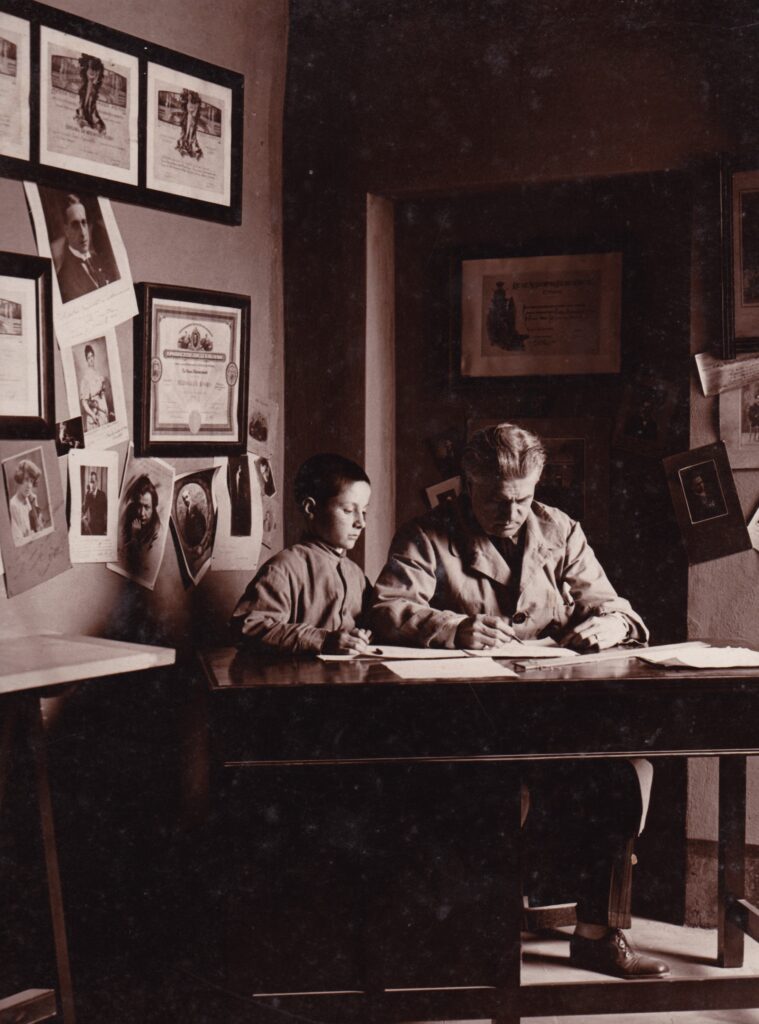
Gaetano Sgarabotto
Born in Vicenza in 1878, Gaetano Sgarabotto trained in plastic and decorative arts in his hometown, at the same time undertaking the study of the cello. He began making instruments at a young age, having already completed and exhibited his work at the age of eighteen; around 1897 he began frequenting Milan, where he came into contact with various local collectors and dealers. He then moved there with his newly formed family in 1901, collaborating continuously with the renowned atelier of Leandro Bisiach, but always cultivating his own clientele as well. In 1907 he began preparations for his return to Vicenza, building a luxurious country house and opening a workshop in the city, where he officially moved in 1911; after World War I Sgarabotto was by then a well-known violin maker, garnering increasingly important affirmations in the various competitions of those years. In 1926, following his close friend and famous cellist Gino Francesconi, he decided to move to Parma, initially accompanied by his son Pietro and later by the whole family. In 1928 preparations began for the opening of the Parma School of Violin Making within the city’s Conservatory, whose courses were inaugurated the following year; at least Sesto Rocchi and Raffaele Vaccari must be remembered among his pupils. In 1936, perhaps in disappointment at the closing of the school, Gaetano retired to Trissino, in the hills north of Vicenza, and remained there during the war period, with frequent visits to his son Pietro, who remained in Parma instead. After the war he spent some years in Brescia, always alongside his inseparable friend Francesconi, to spend the last years of his life in Parma with his family.
One of the protagonists of the twentieth-century renaissance of violin making, Sgarabotto began his career as a repairman, ingenious copyist and forger of classical instruments, an activity to which he devoted himself also in the following years; as a copyist he had an extremely varied and imaginative production, managing to imprint his unmistakable personality on a variety of models from Milan, Naples and Mantua, among others. He also had a very significant production of new instruments, inspired by the classics of the Amati and Antonio Stradivari interpreted in a very recognizable style combining Lombard and Emilian influences.

